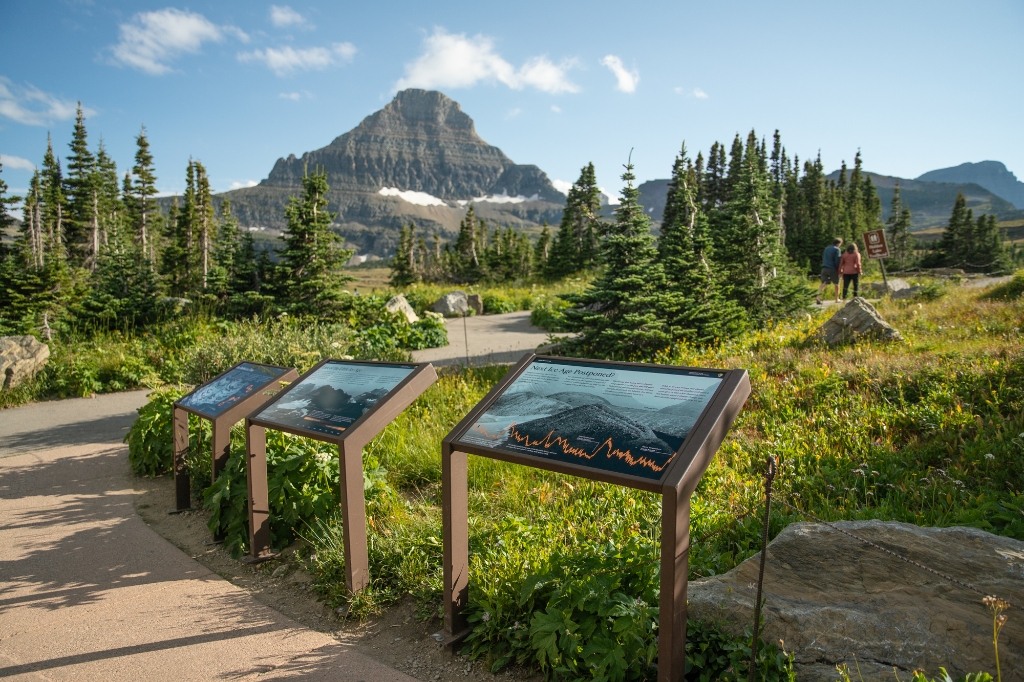
One Bubble at a Time
Humans get a bad rap for altering the atmosphere by burning fossil fuels. There are actually many living things that change the chemistry of the air. Plants photosynthesize, taking in carbon dioxide (CO2) and releasing oxygen (O2).
Animals do the reverse: breathing in oxygen and releasing CO2. One organism you might not have heard of is responsible for the oxygen we breathe today: colonies of cyanobacteria (or blue-green algae) called stromatolites.
Ancient fossils of stromatolites are found throughout the park, including at Logan Pass. Through photosynthesis, they produced the oxygen in our atmosphere today—one tiny bubble at a time.
Burning fossil fuels, which releases many tons of CO2, has changed the composition of our atmosphere in under 200 years, while it took stromatolites over a billion.
Last of the Little Ice Age
Logan Pass is an excellent place to get an up-close look at geologic evidence of the Little Ice Age, a cold period that lasted from roughly 1300 to 1850. The park’s current glaciers reached their largest size during that period.
The onset of a warming trend at the end of the 1800s melted many of this area’s smaller glaciers. Clements Glacier, shown here in 1914, was located near the modern-day trail to Hidden Lake Overlook.
Clements Glacier largely melted away at the end of the Little Ice Age, without much influence from modern climate change. Other glaciers in the park endured after the end of the Little Ice Age, though significantly smaller.
Some of the larger glaciers might have found equilibrium with the 21st century’s climate. Instead, human-caused climate change is melting them away.
Next Ice Age Postponed?
Imagine a cold snap that lasts ten thousand winters. When that happens, and more snow falls in the winters than can melt in the summers, you are probably in an ice age.
For thousands of years this landscape has been shaped by the natural advance and retreat of colossal glaciers carving out the U-shaped valleys we admire today.
If left to its own swings, our climate would be poised for another cold period soon (give or take a few thousand years) but human-caused climate change may have already postponed the next ice age.
Is there something we missed for this itinerary?
Itineraries across USA


















































